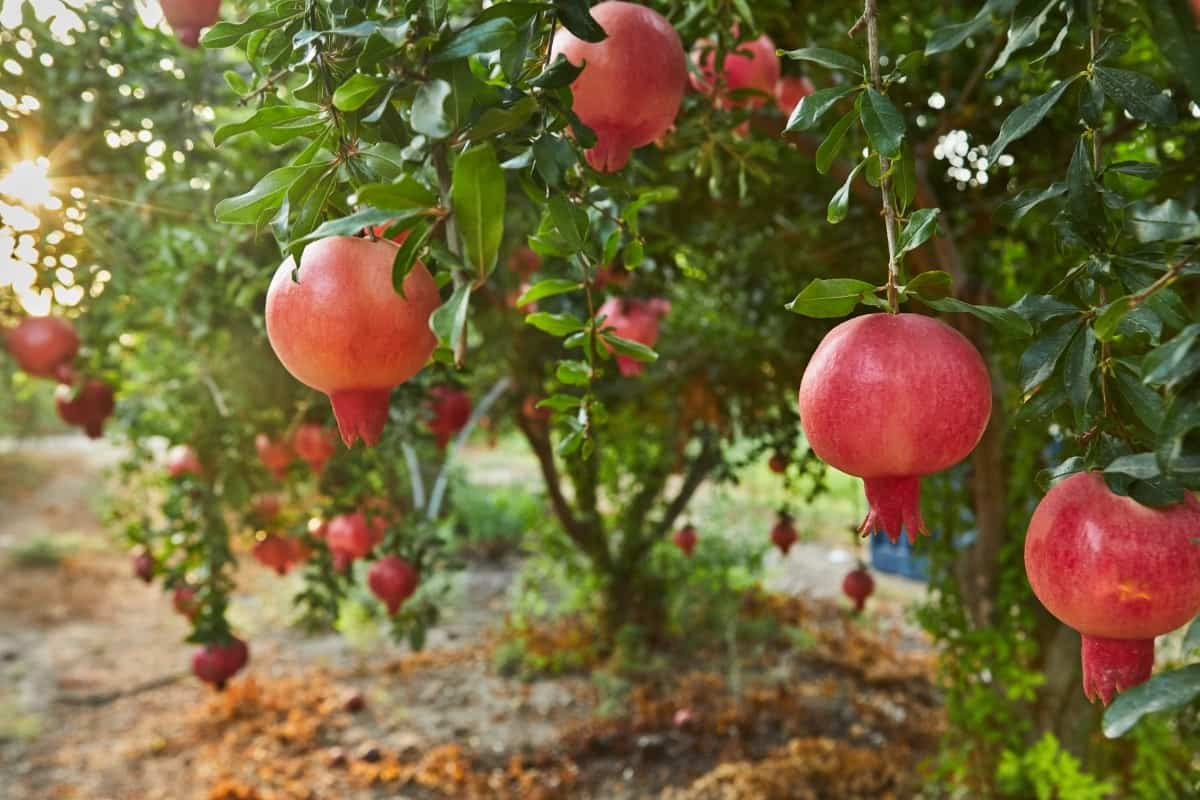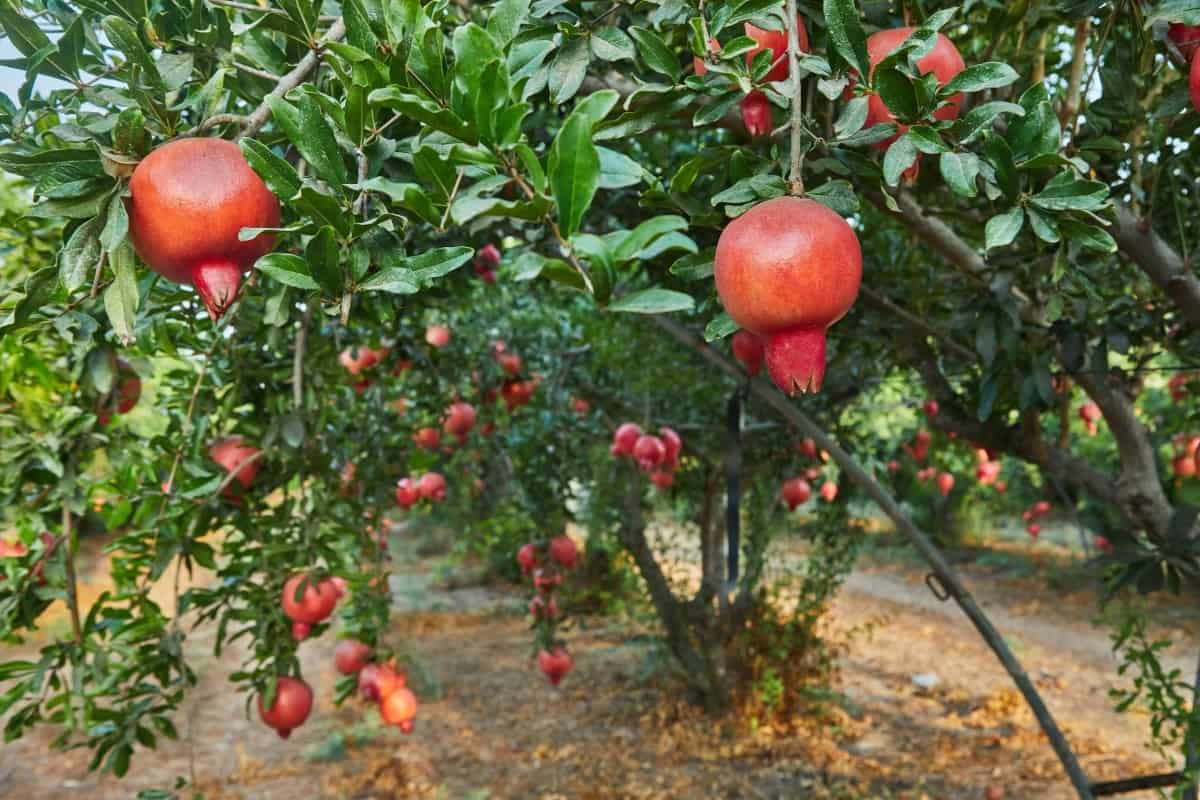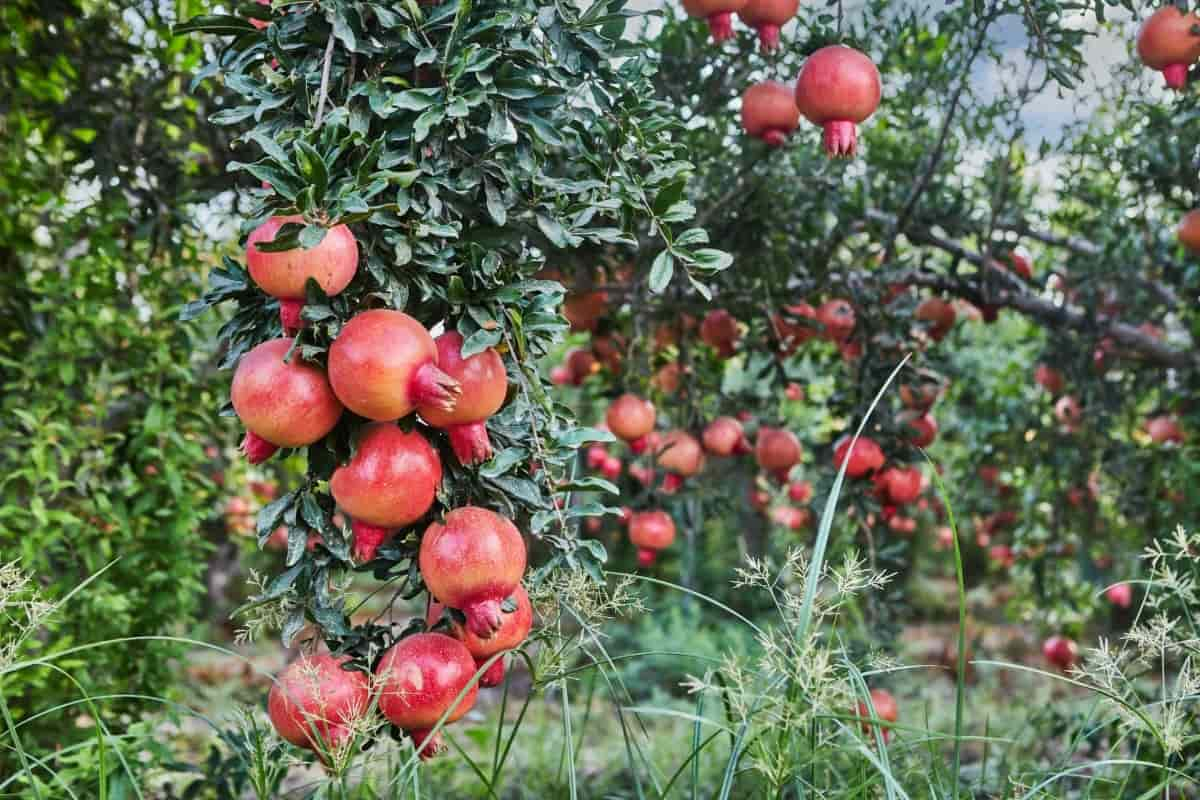Pomegranates are valued in orchards for their health benefits and delicious taste, but growing larger fruits can pose a challenge. This article offers straightforward strategies for increasing the size of pomegranate fruits, focusing on optimizing soil nutrients, maximizing sunlight exposure, effective pruning, adequate irrigation, proper fertilizer application, appropriate fruit thinning, and pest and disease management.

Key considerations include understanding what fertilizer increases pomegranate size, how to improve pomegranates, and identifying the best fertilizer for pomegranate trees, which are crucial for enhancing fruit growth.
How to Increase Pomegranate Fruit Size
Optimizing Soil Nutrients for Larger Pomegranate Fruits
Enhancing pomegranate fruit size begins with soil nutrient optimization, where soil testing is essential to identify nutrient deficiencies. Achieving the correct combination of nitrogen, phosphorus, potassium, and crucial micronutrients is essential for optimal fruit growth. The inclusion of organic materials such as compost can enhance soil quality and nutrient levels, contributing to better fruit development. Regular soil amendments based on test results ensure the trees get the necessary nutrients, significantly impacting fruit growth.
Maximizing Sunlight Exposure for Bigger and Better Pomegranate Fruits
Sunlight exposure is critical for growing larger pomegranates; thus, trees should be planted where they receive full sun most of the day. Proper spacing prevents overcrowding and ensures enough sunlight reaches each tree. Thinning the canopy periodically allows light to reach lower branches, which is crucial for fruit development and size enhancement.
The Role of Pruning in Increasing Pomegranate Fruit Size
Pruning is significant in fruit size management; it involves removing dead or overcrowded branches to improve air circulation and light exposure, which is vital for the tree’s health and fruit growth. Pruning should be done at the right time, typically in late winter or early spring, to maximize fruit size and quality.
Irrigation Techniques for Larger Pomegranate Fruits
Adequate irrigation is essential for larger pomegranate fruits. The trees require consistent moisture, especially during fruit development stages, and both overwatering and underwatering can negatively impact fruit size. Drip irrigation systems are particularly effective, providing a steady water supply directly to the roots, which is crucial for optimal growth.
In case you missed it: Cost of Drip Irrigation Per Acre for Pomegranate: Exploring Installation Costs Along with Subsidy

Fertilizer Application for Bigger Pomegranate Fruits
Fertilizer application is crucial for achieving bigger pomegranate fruits. The best fertilizers for pomegranate trees usually have a balanced mix of essential nutrients. Properly timing and accurately dosing fertilizer is essential, as excessive fertilization can promote excessive foliage growth while hindering fruit development. Utilizing regular soil testing enables precise adjustments in fertilizer applications tailored to the trees’ specific requirements.
Pomegranate Fruit Thinning: When, How, and Why to Thin Fruits for Optimal Growth
Thinning pomegranate fruits is an important practice for larger fruit sizes, involving the removal of some fruits to reduce competition for nutrients and sunlight. Thinning should be done early in the fruit development stage to ensure the remaining fruits have enough resources to grow larger and healthier. This practice also improves air circulation and reduces disease incidence.
Monitoring and Controlling Pests and Diseases for Larger Pomegranate Fruits
Lastly, monitoring and controlling pests and diseases are essential for growing larger pomegranate fruits. Regular tree inspections help detect pest infestations and disease outbreaks early. Utilizing integrated pest management techniques, such as employing natural predators and organic pesticides, is essential for preserving tree vitality, a critical factor in enhancing fruit quality and yield.
Harvesting Pomegranate Fruits at the Right Time: The Importance of Timing for Maximizing Fruit Size and Quality
Harvesting pomegranates at the right time is critical for maximizing their size and quality. The quality, size, and sweetness of the fruit are directly influenced by when it is harvested. Pomegranates typically ripen over several months, and the best time to harvest them is when they have achieved full color, and the skin has a slightly glossy appearance.
In case you missed it: How to Prevent Pomegranate Fruit Rot Naturally: How to Control with Natural and Organic Treatment

Early or late harvesting can lead to fruits that are either underdeveloped or overly ripe, affecting both taste and marketability. Regular monitoring of the fruit’s development and slight variations in color, texture, and firmness helps determine the optimal harvesting time, ensuring that the fruits reach their maximum potential in both size and flavor.
Temperature Management for Bigger Pomegranate Fruits
Temperature management is an essential aspect of growing bigger pomegranate fruits. Pomegranates thrive in warm climates, and the right temperature conditions are necessary for the development of large, juicy fruits. Extreme temperatures, whether excessively high or extremely low, can have a detrimental impact on the growth and overall quality of the fruit.
In regions where temperatures vary significantly, growers need to implement strategies to protect the trees, such as using shade nets or windbreaks during extremely hot weather to reduce the impact of cold winds. Consistent temperature regulation throughout the growing season ensures the trees remain stress-free, promoting better fruit development and size.
Pomegranate Tree Maintenance and Training for Increased Fruit Size
Proper maintenance and training of pomegranate trees are vital for increasing fruit size. Regular maintenance includes tasks like mulching, weeding, and keeping the area around the trees clean to prevent diseases and pests. Training the trees by shaping them and controlling their growth direction ensures better sunlight exposure and air circulation, which are crucial for fruit development.
In case you missed it: Fertilizing Potted Pomegranate Trees: Organic, Natural, Homemade, NPK Ratio, When and How to Apply

Staking or using trellises can also help manage the trees’ shape and size, allowing for easier maintenance and harvesting. This ongoing care and attention result in healthier trees that are more capable of producing larger fruits.
Conclusion
To summarize, achieving bigger and better-quality pomegranate fruits involves a comprehensive approach that includes proper harvesting timing, temperature management, and diligent tree maintenance and training. By addressing each of these factors, cultivators can exert a substantial influence on the size and quality of their pomegranate yield.
Regular monitoring, timely interventions, and a deep understanding of the specific needs of pomegranate trees are the keys to successful fruit size enhancement. With patience and dedication, it’s possible to produce larger, more flavorful pomegranates that are both enjoyable and beneficial.
- Ultimate Guide to Ossabaw Island Hog: Breeding, Raising, Diet, and Care
- Ultimate Guide to Juliana Pig: Raising Facts, Size, Diet, Care, and Lifespan
- Raising Lleyn Sheep: Disadvantages, Price, Uses, Characteristics, and Care
- Ultimate Guide to Meishan Pig: Breed Facts, Breeding, Raising, and Care
- Ultimate Guide to Teacup Pigs: Raising, Diet, Lifespan, Cost, and Care
- Guide to Raising Poll Dorset Sheep: Facts, Profile, Characteristics, Uses, and Care
- Ultimate Guide to Bighorn Sheep: Characteristics, Diet, Lifespan, Breeding, and Lifecycle
- Ultimate Guide to Raising Katahdin Sheep: Farming Facts, Breed Profile, Uses, and Care
- Ultimate Guide to Raising Oreo Cows: Belted Galloways Farming Facts, Profile, Uses, and Care